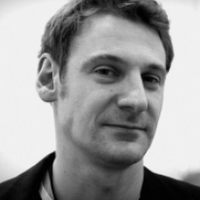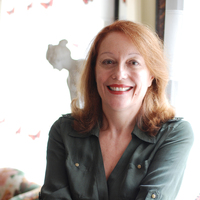
Paul Krumm
I hold a BS degree from Wayne State University with a major in Sociology and minors in Physics and Math. I have worked at many kinds of labor, from farm worker, to factory worker, to aluminum mold maker, to musical instrument maker, to inventor and maker of motion picture film gages, to appliance repairman, to newspaper layout, to licensed plumbing and electrical installation and repair, to house building, to design and building of machines to process lavender buds.
I am semi-retired now, living off the grid in the earth sheltered home I built with my wife. I have long had an interest in epistemology and the understanding of how money works and its implications in our relationships with each other.
Address: Grinnell, Iowa 60112
I am semi-retired now, living off the grid in the earth sheltered home I built with my wife. I have long had an interest in epistemology and the understanding of how money works and its implications in our relationships with each other.
Address: Grinnell, Iowa 60112
less
Related Authors
Manuel Dries
The Open University
David Seamon
Kansas State University
Remo Caponi
University of Cologne
Giulia Sissa
Ucla
Kathleen Flake
University of Virginia
Brian M. Hauglid
Brigham Young University
Dalia Nassar
The University of Sydney
André Bueno
UERJ - Universidade do Estado do Rio de Janeiro / Rio de Janeiro State University
Cody Staton
Independent Researcher










Uploads
Drafts by Paul Krumm
This paper is an attempt to view fiat money from a broader perspective, comparing the ways that it has been organized and operated through the last 5,000 years.
The first method of acknowledging contributions, which goes back to far antiquity, and is even shared with other higher community animals, is the way of the gifting economy. Here the value of trade isn't quantified. While there is no quantitative accounting of contributions or consumption in the gifting economy, everyone is expected to do their part.
However, as cultures grew larger, resulting in larger communities with less cohesion and strength, there was a felt need for more quantitative measures to assure that everyone did their part, as well as to facilitate trade with distant places. Out of this felt need to regularize trade, local as well as distant, a number of different solutions and mixtures of solutions have risen to quantify value produced and used/consumed; 'sold' and 'bought' using money.
We will start by introducing basic monetary concepts and the variety of ways of organizing money. Then we will recall the history of money, and possibilities for change to a system that, unlike capitalism, are compatible with a just society and long term stability.
We are all logical, each in our own way. What we are finding is that our values are the assumptions upon which our individual life logics are based. These value assumptions are based on each person’s perceptions of the universe. It will be shown that perceptions are in turn based on faith. It will also be proposed that there are certain primary value assumptions that reflect the relationship between man and his immediate environment and the cosmos that must be agreed upon by the members of a culture for it to continue to exist over time. Diversity of secondary values, so long as they are congruent with the primary values, is the place for diversity.
We are all logical, each in our own way. What we are finding is that our values are the assumptions upon which our individual life logics are based. These value assumptions are based on each person’s perceptions of the universe. It will be shown that perceptions are in turn based on faith.
It will also be proposed that there are certain primary value assumptions that reflect the relationship between man and his immediate environment and the cosmos that must be agreed upon by the members of a culture for it to continue to exist over time. Diversity of secondary values, so long as they are congruent with the primary values, is the place for diversity.
Frameworks will be introduced that are useful in organizing value assumptions, and useful in predicting behavior based on what values underlie action. Our study will lead to a clearer understanding of the relationship between perception, faith, values, power, logic, and feelings. It will also point out impediments to growth and development, and value criteria for sustainability. Discussion of the value assumptions and logic of interaction theory, and growth/development theory will demonstrate the utility of the presentation.
Papers by Paul Krumm
This paper is an attempt to view fiat money from a broader perspective, comparing the ways that it has been organized and operated through the last 5,000 years.
The first method of acknowledging contributions, which goes back to far antiquity, and is even shared with other higher community animals, is the way of the gifting economy. Here the value of trade isn't quantified. While there is no quantitative accounting of contributions or consumption in the gifting economy, everyone is expected to do their part.
However, as cultures grew larger, resulting in larger communities with less cohesion and strength, there was a felt need for more quantitative measures to assure that everyone did their part, as well as to facilitate trade with distant places. Out of this felt need to regularize trade, local as well as distant, a number of different solutions and mixtures of solutions have risen to quantify value produced and used/consumed; 'sold' and 'bought' using money.
We will start by introducing basic monetary concepts and the variety of ways of organizing money. Then we will recall the history of money, and possibilities for change to a system that, unlike capitalism, are compatible with a just society and long term stability.
We are all logical, each in our own way. What we are finding is that our values are the assumptions upon which our individual life logics are based. These value assumptions are based on each person’s perceptions of the universe. It will be shown that perceptions are in turn based on faith. It will also be proposed that there are certain primary value assumptions that reflect the relationship between man and his immediate environment and the cosmos that must be agreed upon by the members of a culture for it to continue to exist over time. Diversity of secondary values, so long as they are congruent with the primary values, is the place for diversity.
We are all logical, each in our own way. What we are finding is that our values are the assumptions upon which our individual life logics are based. These value assumptions are based on each person’s perceptions of the universe. It will be shown that perceptions are in turn based on faith.
It will also be proposed that there are certain primary value assumptions that reflect the relationship between man and his immediate environment and the cosmos that must be agreed upon by the members of a culture for it to continue to exist over time. Diversity of secondary values, so long as they are congruent with the primary values, is the place for diversity.
Frameworks will be introduced that are useful in organizing value assumptions, and useful in predicting behavior based on what values underlie action. Our study will lead to a clearer understanding of the relationship between perception, faith, values, power, logic, and feelings. It will also point out impediments to growth and development, and value criteria for sustainability. Discussion of the value assumptions and logic of interaction theory, and growth/development theory will demonstrate the utility of the presentation.